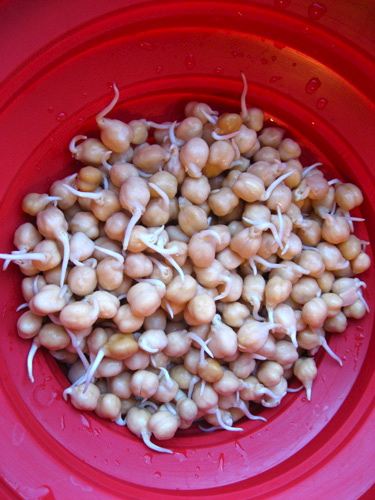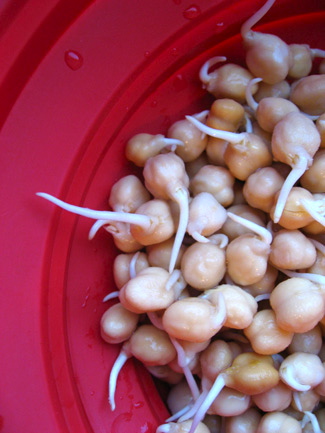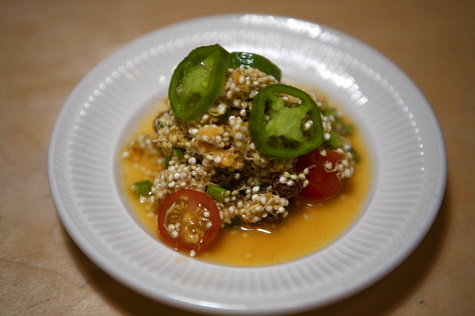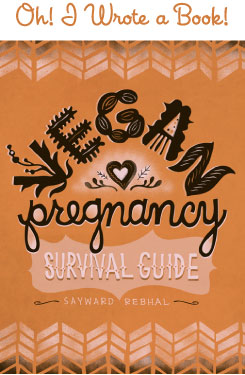
Have you ever stopped to think about what a seed really is? Underneath it’s husk, that teeny tiny darling contains all of the nutrients it needs to initiate the rapid cell division and biochemical processes required to make a plant. That’s impressive! In their dried ‘seed’ state, the majority of these micro-and macronutrients are stored away, just biding their time in dormancy. However, germination triggers a quick transformation whereby all of the vitamins, minerals, proteins, and essential fatty acids begin to multiply. And multiply. And multiply.
Most people consume seeds (nuts, grains, legumes) that are in a hibernation phase – either raw or cooked – when their nutrients are locked up tight by deactivators such as phytic acid and other enzyme inhibitors. These dormant seeds are more difficult to digest and can block nutrient absorption and uptake. In order to maximize the nourishing potential of seeds (nuts, grains, legumes), we need to unlock them with a simple and common-sense key: give them life. Allow them to grow, and they will repay you in spades.

So, what exactly happens? Initially, germination produces vitamin C while increasing carotene, vitamin E, and B-vitamins like riboflavin. Sprouting turns a seed from an acid-forming food into an alkalinizing food, which is essential for proper pH balance. Living sprouts carry with them a powerhouse of enzymes that aid in digestion and other metabolic functions. Sprouting causes protein content to rise while fat content drops, and complex carbohydrates begin breaking down into simple glucose for easy assimilation into the body. Bonus: this also helps prevent the annoying gas often associated with our lovely legumes!
Best of all, sprouting is easy! Different people will swear by different methods, but I use the most simple and straightforward approach, and I’ve always been successful. It goes something like this:
Before they will sprout, they need to soak. Place the seeds (nuts, grains, legumes) in a bowl and cover with lukewarm water. Soak times vary by species, but a good general guideline is 6-8 hours. It may be shorter for smaller seeds (like sesame and flax) and longer for harder ones (like rye, rice, or lentils).
After seeds have soaked, remove them from their bath and gently rinse them in a colander or bowl. Place rinsed seeds in a dish or jar, and leave them be, uncovered. Most seeds sprout in 1-3 days.

Quinoa seeds, soaked and rinsed and left to sprout.
Like soak times, sprout times will vary by species. You should continue rinsing your seeds very carefully each day, until they begin to grow their tail. If you want a long tail, just continue to let them be. But if you want extend their life, you can refrigerate them to slow the growth. Either way, once the tail is sprouted they are ready to eat. The longer you wait, the more ‘watery’ and less flavorful they will be (in some cases, this is a good thing). Sprouts will keep for up to 5 days in the fridge.

Sprouted chickpeas with long burly tails!
I can’t tell you how much fun I’ve been having, mucking about in the kitchen, experimenting with sprouts. I made some wild rice, but neither the texture nor the flavor were very appealing, so I’ll need to work on that some more. (I’d love tips) But those chickpeas up there? I blended those buggers into a delicious RAW hummus that I delighted in for days. And that quinoa? Oh my . . . that quinoa. I mixed it up with some cherry tomatoes, diced jalapeños, green onions, and raisins, and tossed the bunch in some fresh mandarine juice, olive oil, agave, and curry powder. It was absolutely delightful, and I can’t wait to make it again (I’ve got some quinoa soaking!)

Mandarin-Curry Sprouted Quinoa Salad

-
Stephanie
-
http://www.live-green-smoothie-diet.com Angela Leeds
-
http://www.graviolaleaves.com Cancer Cure
-
Russ
-
Russ
-
Russ
-
A
-
pamilea
-
http://www.melissacatering.com Melissa
-
Anna
-
http://livecompletely.blogspot.com/ kory
-
tandralee
-
tandralee
-
http://www.sarathomas.etsy.com sara thomas
-
Sarah C.
-
http://bonzaiaphrodite.com/ Sayward Rebhal
-
Sarah C.
-
Nat Smith
-
http://bonzaiaphrodite.com/ Sayward Rebhal
-
Chaya Kurtz
-
http://bonzaiaphrodite.com/ Sayward Rebhal
-
codygillespie



